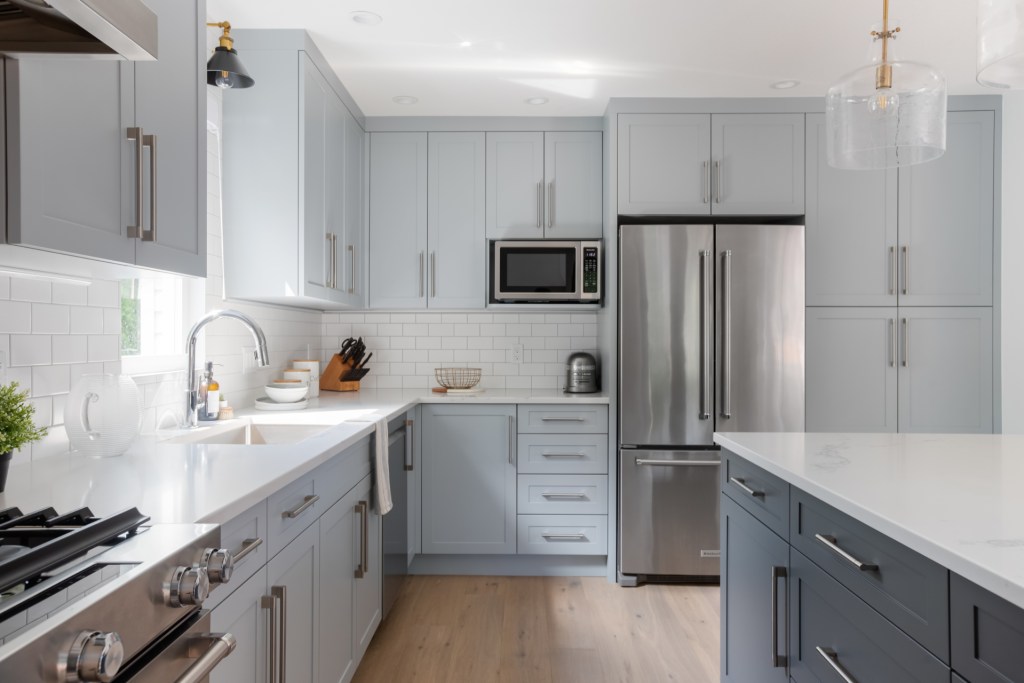As an interior designer who has been practicing in Vancouver for over 10 years, I’ve seen a significant shift towards sustainability in home design. Vancouverites are increasingly conscious of their environmental impact and are seeking ways to make their homes more eco-friendly. In this post, I’ll share some practical sustainable interior design practices that can help you create a beautiful, green home.
1. Choose Sustainable Materials
Selecting materials that are sustainable is a fundamental step in eco-friendly design. Look for materials that have a low environmental impact, are renewable, and are responsibly sourced.
Bamboo: Bamboo is a rapidly renewable resource and is an excellent alternative to traditional hardwood. It can be used for flooring, cabinetry, and even furniture.
Recycled Materials: Consider using recycled materials such as reclaimed wood, recycled metal, and glass. These materials reduce waste and often have unique, characterful appearances.
Natural Paints and Finishes: Opt for paints and finishes that are low in volatile organic compounds (VOCs). These are better for indoor air quality and the environment.
2. Prioritize Energy Efficiency
Energy-efficient design not only reduces your carbon footprint but also lowers your energy bills. There are several ways to enhance the energy efficiency of your home.
Insulation: Ensure your home is well-insulated to reduce heating and cooling demands. High-quality insulation in walls, roofs, and floors is essential.
Energy-Efficient Windows: Install double or triple-glazed windows to improve insulation and reduce energy loss. Look for windows with a high energy efficiency rating.
LED Lighting: Use LED lighting throughout your home. LEDs consume less energy and have a longer lifespan compared to traditional incandescent bulbs.
3. Invest in Quality, Timeless Furniture
Fast furniture contributes significantly to landfill waste. Instead, invest in high-quality, timeless pieces that will last for years.
Durability: Choose furniture made from durable materials that can withstand daily use. Solid wood, metal, and high-quality textiles are good options.
Classic Designs: Opt for classic designs that won’t go out of style. Timeless pieces can be reupholstered or refinished instead of being replaced.
Second-Hand Furniture: Consider buying second-hand or vintage furniture. This not only gives new life to old pieces but also reduces the demand for new production.
4. Implement Water-Saving Fixtures
Water conservation is crucial, especially in a city like Vancouver where water resources are precious. Implementing water-saving fixtures can significantly reduce your water usage.
Low-Flow Faucets and Showerheads: Install low-flow faucets and showerheads to reduce water consumption without sacrificing performance.
Dual-Flush Toilets: Dual-flush toilets offer two flush options, allowing you to use less water for liquid waste.
Greywater Systems: Consider installing a greywater system to recycle water from sinks, showers, and washing machines for use in irrigation and flushing toilets.
5. Incorporate Green Building Practices
Green building practices are designed to reduce the environmental impact of construction and create healthier living environments.
Green Roofs: If possible, install a green roof. Green roofs provide insulation, reduce stormwater runoff, and create habitats for wildlife.
Passive Solar Design: Design your home to take advantage of passive solar heating and cooling. Proper orientation, window placement, and shading can significantly reduce energy needs.
Sustainable Landscaping: Use native plants and drought-tolerant landscaping to reduce water usage and create a more sustainable garden.
6. Enhance Indoor Air Quality
Good indoor air quality is essential for a healthy home. Incorporating certain design elements can improve the air you breathe.
Ventilation: Ensure your home has adequate ventilation to remove pollutants and bring in fresh air. Use exhaust fans, air purifiers, and open windows regularly.
Non-Toxic Materials: Use non-toxic building materials, furnishings, and cleaning products to reduce indoor pollutants. Look for certifications like GREENGUARD or Green Seal.
Houseplants: Certain houseplants can improve indoor air quality by removing toxins. Consider adding plants like spider plants, peace lilies, and snake plants to your décor.
If you’re looking for help creating the space of your dreams, contact us today!






